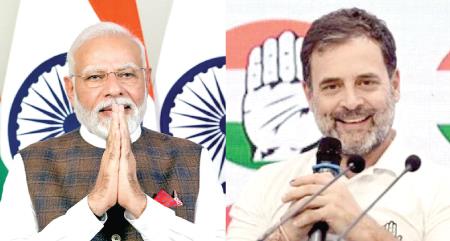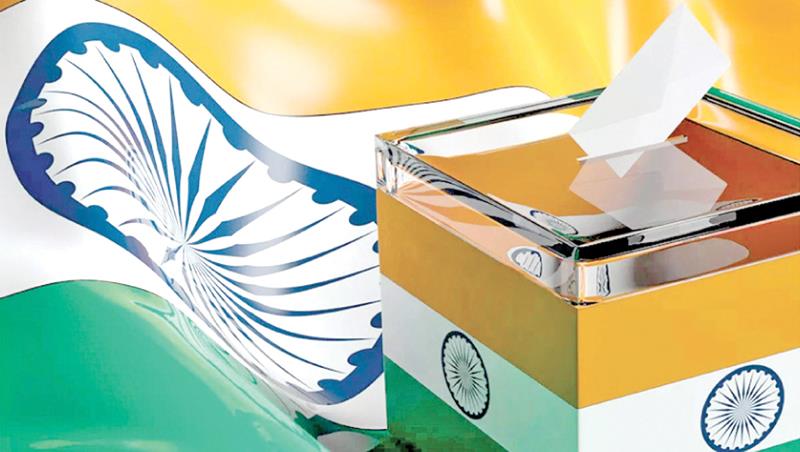
BJP Gets A Third Term But With Its Wings Clipped
Colombo, June 9: In the recent Indian parliamentary elections, the Bharatiya Janata Party (BJP) failed to get a simple majority. And yet it could form a government thanks to its partners in the National Democratic Alliance (NDA). Despite this, the going is expected to be tough given the party's dependence on its allies and the significant growth of opposition members in parliament.
When the results of the elections to the 18th Lok Sabha (the Lower House of the Indian parliament) were announced on June 4, India's Prime Minister and the leader of the Bharatiya Janata Party (BJP), Narendra Modi had scored a hat trick. He had secured a third term in office, the second Indian Prime Minister to have done so after Jawaharlal Nehru (1946-1962).
ADVERTISEMENTBut it was a pyrrhic victory for the BJP. It did not come out with flying colours. It had failed to get even a simple majority, having secured only 240 seats in the 543-member House. A party needs 272 seats to claim a simple majority and form a government. But for the National Democratic Alliance (NDA), which it leads, the BJP could not form a government.
Throughout the unusually long election process, from April 19 to June 1 to be precise, the BJP was aiming at 330 to 370 for itself and 400 plus for its multi-party alliance, the NDA. But it ended its flight of imagination with its wings clipped. It had secured only 240 by itself. Together with the NDA it got 296, a little above the simple majority.
In the last elections in 2019, the BJP by itself had bagged 303 and the NDA as a whole had secured 353. The opposition was puny with the biggest party, the Congress, having just 52.
The BJP also failed to achieve its much trumpeted goal of ridding India of the Congress party, which it identified with the privileged classes, pretentious urban liberals, and minorities, especially Muslims.
Congress Mukt Bharat (An India free from the Congress) was Modi's slogan.
However, the tally of the Congress rose from 52 in 2019, to 99 in 2024. And the Congress-led INDIA group had collectively bagged 232.
Role of TDP and JD (U)
As it stands, the BJP can remain in power only with the support of its partners in the NDA, especially, Telugu Desam Party (TDP) and the Janata Dal United (JDU),led by Chandrababu Naidu and Nitish Kumar, respectively. But Nadu and Nitish are known to be unreliable as per their record so far. They might jump ship and join the Congress-led INDIA if Modi did not meet their demands.
Besides demanding plum posts that Modi might be extremely reluctant to give, problems could arise from the fact that Naidu and Nitish are ideological opposites of Modi. Neither Naidu nor Nitish is a
believer in Hindu majoritarianism (Hindu Rashtra or Hindutva). They also support a caste-wise census and giving reservation to backward Muslims, policies which are anathema for the BJP.
However, Modi could always use money power and governmental investigating agencies at his command to bring these and other dissenters in line. And as Modi and Home Minister Amit Shah have done so many times in the last 10 years,
they could also break the TDP and the JD (U) in the same way they split the Shiv Sena and National Congress Party (NCP) in Maharashtra and usurped power in that State.
But given the BJP's inadequate numbers in parliament, Modi might find it difficult to use some of these time-worn methods. Verily, the halcyon days marked by unlimited power are over.
Reasons for Decline
In these elections, the opposition INDIA alliance fully utilized the popular revulsion against the use of investigating agencies to gag critics and put opposition leaders in jail. Chief Ministers Arvind Kejriwal of Delhi and Hemant Soren of Jharkhand were jailed, the former when election campaigns had commenced. The bank account of the principal opposition party, the Congress, was frozen in pursuance of an old case just ahead of the elections.
The voice of the opposition was silenced by throwing out more than a hundred MPs. Their absence was used to pass some important measures without a proper debate.
In the ten years in power, the BJP did ensure economic growth but it was growth without employment. Unemployment had soared to 8% from 4% in 2014. The promise of generating 20 million jobs a year was not kept.
There was a mismatch between the country's GDP growth and the common man's economic condition. The number of billionaires was growing while the man in the street was getting poorer.
The BJP regime had neglected agrarian distress. Farmers from Punjab and Haryana, Western Uttar Pradesh and Rajasthan had to continually agitate for a year and half before the controversial farm laws were withdrawn. Farmers' suicide due to indebtedness had reached alarming levels in Maharashtra.
In a bid to corner Hindu votes, BJP leaders, beginning with Modi, tried to deepen the Hindu-Muslim divide by accusing the Congress of planning to give undue benefits to Muslims, even by taking away buffaloes from farmers, and taking away gold chains worn as a sign of marriage (the mangalsutra) away from women. He described Muslims as“intruders” who breed children to increase their population.
The Congress candidate Geniben Thakor achieved a ground-breaking victory in Banaskantha, the very district where Modi made his infamous buffalo remark targeting Muslims during the campaign. The BJP also lost in Banswara in Rajathan by a 240,000 margin. Banswara was where Modi infamously referred to Muslims as infiltrators and those with more children.

Narendra Modi and Rahul Gandhi
The BJP lost also in Faizabad, the district in which Ayodhya is located. It is in Ayodhya that a grandiose temple for Lord Ram was built by
Modi with an eye on the Hindu vote.
BJP suffered significant losses in Dalit-dominated constituencies because many BJP leaders were declaring from election platforms that the party wants to win 400 plus seats to be able to amend the constitution to do away caste-based reservations.
Most of the middle and lower castes in India consider caste-based reservation in government departments and educational institutions as necessary for their progress. Most political parties support such affirmative actions because they bring about social equality.
The BJP-led government had turned a blind eye to the massacre and arson which went on for months in the Eastern State of Manipur. This resulted in the BJP failing to win any seat there. The BJP had failed put up a candidate in Kashmir and Ladakh, whose autonomy was taken away in 2019.
In West Bengal, the Trinamool Congress won 29 seats while the BJP's tally fell from 19 to 12. Among the winners was Mahua Moitra from Krishnanagar, who was expelled from the Lok Sabha on unproven charges last year.
The INDIA alliance swept Tamil Nadu with the BJP not even getting a single seat. The BJP was wrecked in Maharshtra JD (U) and not the BJP emerged as the top performer in Bihar. Uttar Pradesh which had been an impregnable BJP fortress for 10 years was badly breached.
The rising disillusionment of the people with the system could be seen in the declining polling percentages.
The elections also brought to the fore the role of the alliance between money bags, muscle and the corporate-owned media. But India's social media rose to the occasion and filled the yawning
gaps in the coverage of issues by the mainstream, government-linked and corporate-controlled media.
“The emergence of social media as the key player in this election has everything to do with the complete abdication of the bulk of traditional media from its professional purpose of framing political issues with credibility,” wrote Yamini Aiyar and Neelanjan Sircar in The Hindu.
Indeed, YouTube influencers like Druv Rathee, Raveesh Kumar, Deepak Sharma, and Nilu Vyas, to name only a few, got millions of subscribers in India, where social media penetration is both wide and deep.
END

Legal Disclaimer:
MENAFN provides the information “as is” without warranty of any kind. We do not accept any responsibility or liability for the accuracy, content, images, videos, licenses, completeness, legality, or reliability of the information contained in this article. If you have any complaints or copyright issues related to this article, kindly contact the provider above.






















Comments
No comment